It’s been a great class with really wonderful students. I’m always so thrilled to see what they are working on each week. Since this was the last week, I reall packed in the demonstrations.
Banding
I started off by throwing a bowl with about 3 pounds of clay. People wanted a refresher in how to throw a larger bowl. This was a good item to demonstrate banding with slip while it was still on the wheel. One of the most common and annoying problems with banding is that the slip doesn’t just glide on there in a steady stream leaving a perfect highway of color on your pot. Especially if you are applying it to a leather surface, the clay can suck up the moisture from a thicker slip and give you a very uneven, often kind-of pitted surface. If you are applying to leather hard it helps to spritz it with a bit of water ; wait a few seconds for the water to sink in a little, otherwise you lay your slip down onto a thin layer of water and it can drip and not stick well.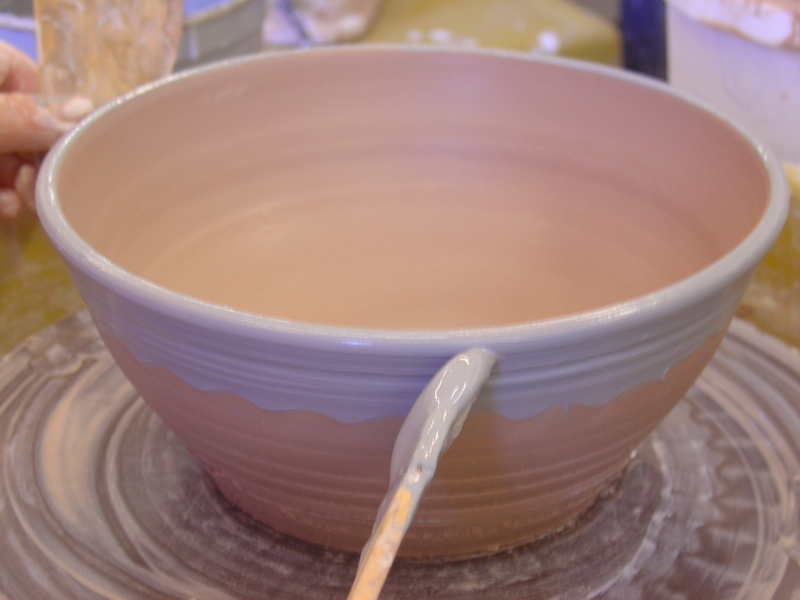
If you are applying to a freshly thrown pots (which is ideal for bonding for porcelain slip bonding to stoneware) you still have to dip the brush more frequently than you’d think. Just keep the wheel going steadily and hold your hand steady too. You can always clean up the edges with a metal rib or stick tool. Here I used my rib to put a little wavy edge on my band. 
Leaf Stencils
Next I threw a low terra cotta bowl so we could do some stencils using leaves.  I also showed how you can take something like a fork and with an even motion while the wheel is going slowly, make another kind of border around the rim- this time on the inside.
I also showed how you can take something like a fork and with an even motion while the wheel is going slowly, make another kind of border around the rim- this time on the inside. 
I had some problem getting the leaves to really lay flat but Kristina solved that problem by using some newsprint to really presss her leaves down flat.
Here is the plate after she pulled the leaves off 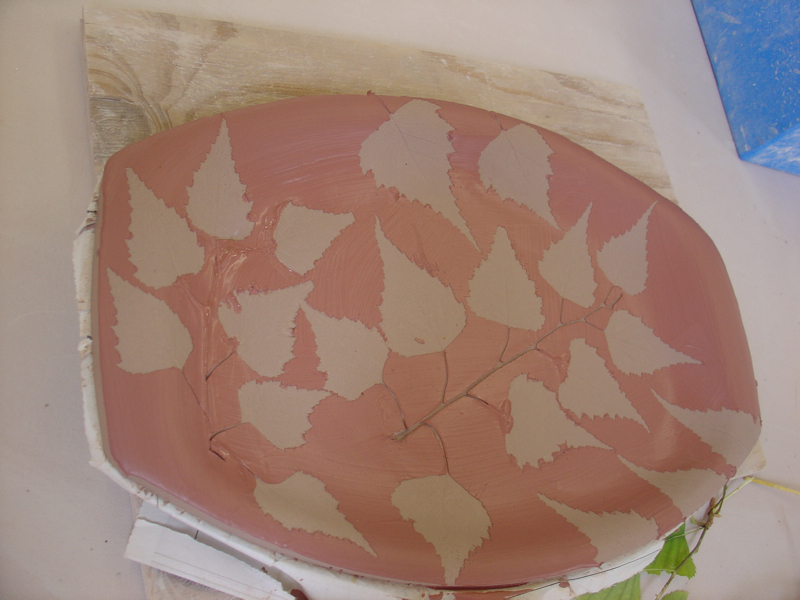
Beautiful. She will go back in when the slip is leather hard and clean up any places the slip snuck under the leaves.
Jennifer put some on the outside of her mugs which also turned out great.  It’s important to think about how the leaves will fill the space. I think all these examples (except mine) are excellent.
It’s important to think about how the leaves will fill the space. I think all these examples (except mine) are excellent.
Marbelizing
Another thing you can do with two or more colors of slip is to marbelize- like the fancy paper you often see. I think for this you need a fairly flat, contained surface. I had a small stoneware plate which I poured some blue slip into and then dotted and trailed green on top of that in a fairly random pattern.  then I dragged a very pointy brush (you could use a feather or pointy stick too) through the dots.
then I dragged a very pointy brush (you could use a feather or pointy stick too) through the dots.  I was inspired by plant forms.
I was inspired by plant forms.
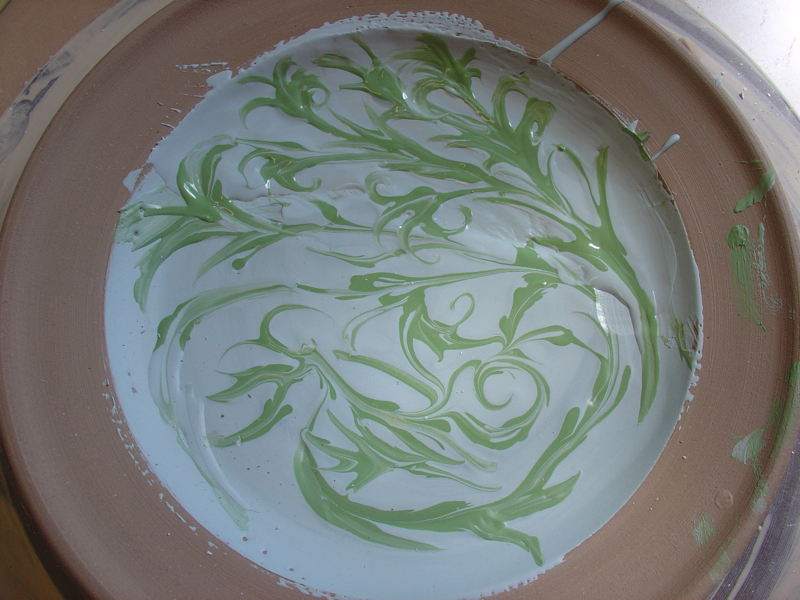 When I trim the plate, I’ll go in and clean up the edge of the inside too.
When I trim the plate, I’ll go in and clean up the edge of the inside too.
The one thing to be careful of when marbelizing is that it adds a LOT of moisture to your pot. Make sure your form is supported or dry enough to absorb that moisture and keep its shape.
Etching
Then I did my surprise demo. This was “etched” clay. Really, I would only recommend this technique for porcelain as you will soon see why. I threw a tumbler and set it to dry. When it was hard leather dry, I painted a pattern on it in wax. After the wax was completely dry (and you can do this technique with varnish was well) I began wiping at the surface with a wet sponge. The wax protects the surface beneath it but the surrounding surface is removed.
After the wax was completely dry (and you can do this technique with varnish was well) I began wiping at the surface with a wet sponge. The wax protects the surface beneath it but the surrounding surface is removed. If this was stoneware, it would just be horribly gritty.
If this was stoneware, it would just be horribly gritty.
After a few wipes, I decided to scratch into my wax a little to get a more detailed resist area. 
 This will look great with a breaking glaze like Shino, Celadon or even Josh Green.
This will look great with a breaking glaze like Shino, Celadon or even Josh Green.
Kelly took this idea and ran with it – here is her process: 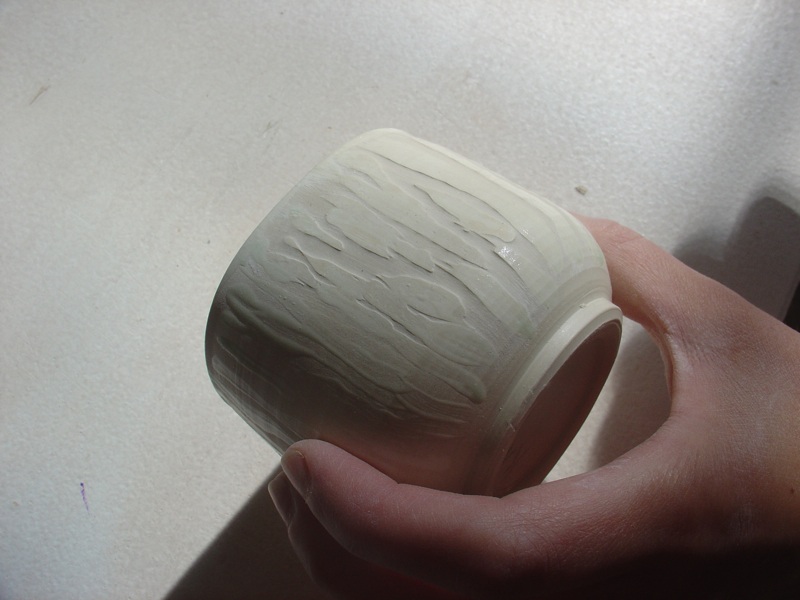 and she got the brilliant idea of inlaying black slip into the wiped away areas. She painted it on and the wax resisted it over the raised areas.
and she got the brilliant idea of inlaying black slip into the wiped away areas. She painted it on and the wax resisted it over the raised areas. 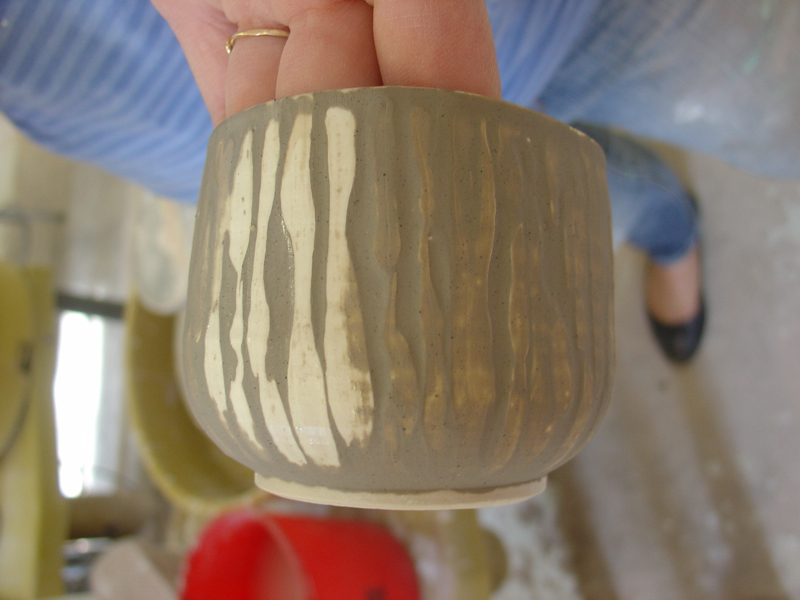 She sponged away all non-adhering slip and here is the result
She sponged away all non-adhering slip and here is the result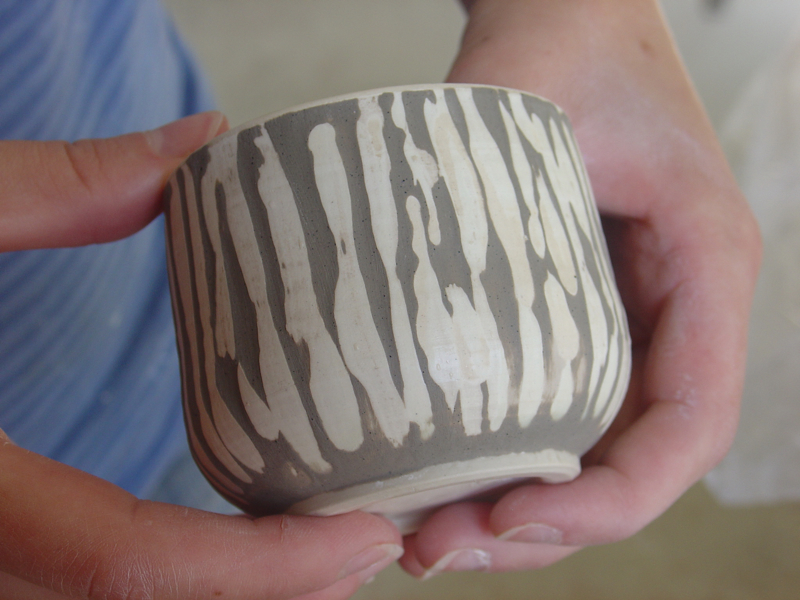 Doesn’t that look cool?
Doesn’t that look cool?
Another variation on this idea is to paint your entire surface with slip, then a pattern over it in wax and then when you wipe away, you leave the color where the wax protects it and the color is removed everywhere else. Kristina suggested this and I can’t wait to try it!
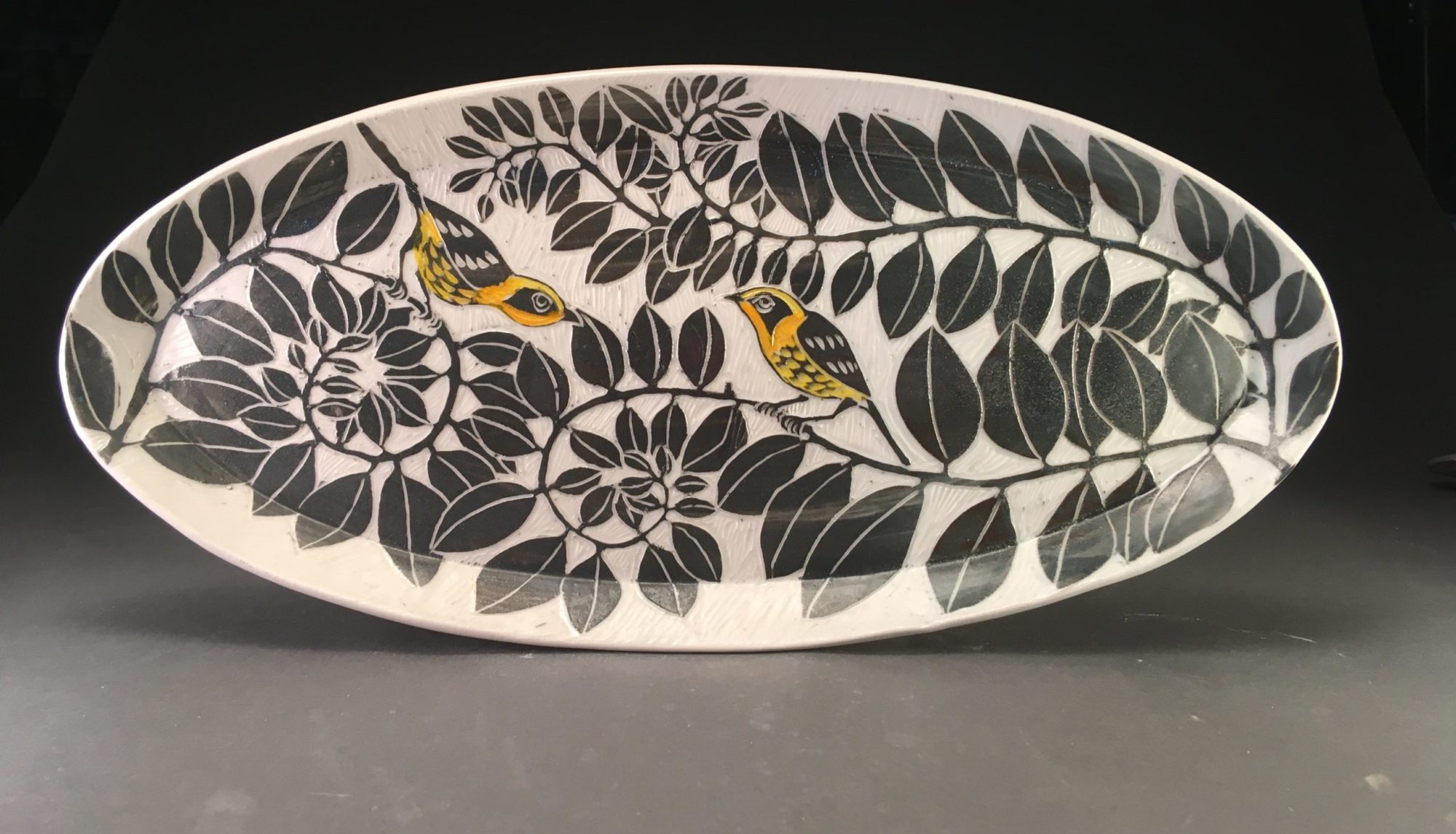



Wahooo … the wax resist technique is brilliant.